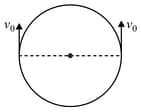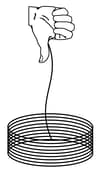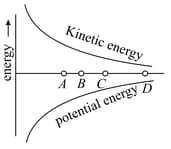Embibe Experts Solutions for Chapter: Work, Energy and Power, Exercise 1: Exercise-1
Embibe Experts Physics Solutions for Exercise - Embibe Experts Solutions for Chapter: Work, Energy and Power, Exercise 1: Exercise-1
Attempt the free practice questions on Chapter 8: Work, Energy and Power, Exercise 1: Exercise-1 with hints and solutions to strengthen your understanding. Beta Question Bank for Engineering: Physics solutions are prepared by Experienced Embibe Experts.
Questions from Embibe Experts Solutions for Chapter: Work, Energy and Power, Exercise 1: Exercise-1 with Hints & Solutions
A marble of mass and radius is placed in a hemispherical bowl of radius . the minimum velocity to be given to the marble so that it reaches the highest point is :
A particle of mass which is at rest explodes into masses and . Two of the fragments of masses m and are found to move with equal speeds each in opposite directions. The total mechanical energy released in the process of explosion is:-
Two blocks and resting on a smooth horizontal surface is connected by a spring of stiffness . Initially the spring is undeformed and a velocity of is imparted to along the line of the spring away from . The maximum extension in meters of the spring during subsequent motion is:-
Two particles of mass , constrained to move along the circumference of a smooth circular hoop of equal mass , are initially located at opposite ends of a diameter and given equal velocities shown in the figure. The entire arrangement is located in gravity free space. Their velocity just before collision is:-

A uniform rope of linear mass density and length is coiled on a smooth horizontal surface. One end is pulled up with constant velocity . Then the average power applied by the external agent in pulling the entire rope just off the ground is:-

The weight of a person is . If he gets calories of heat through food and the efficiency of his body is , then upto what height he can climb? Take
Hailstone at falls from a height of on an insulating surface converting the whole of its kinetic energy into heat. What part of it will melt:
Potential energy and kinetic energy of a two particle system are shown by and . respectively in figure. This system is bound at :

